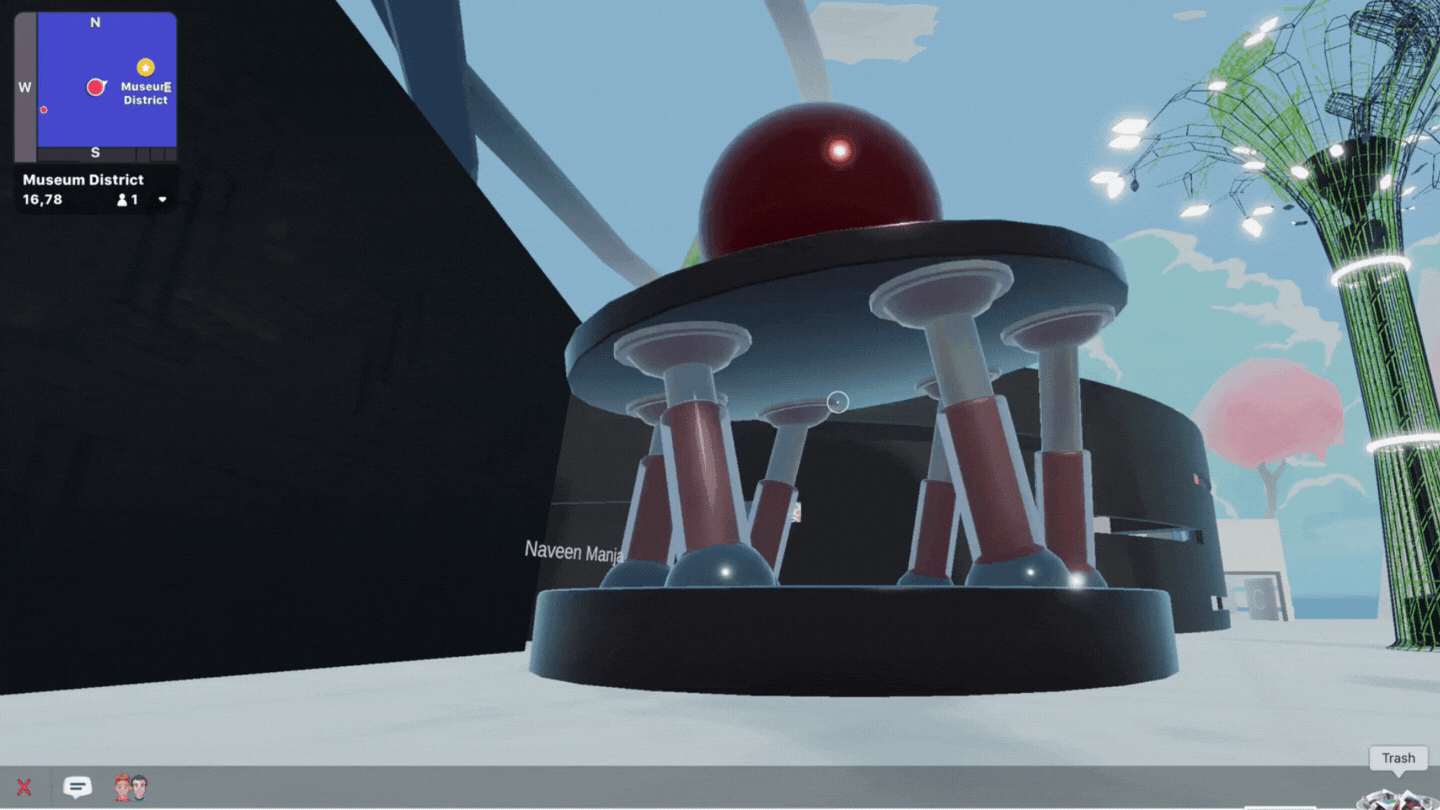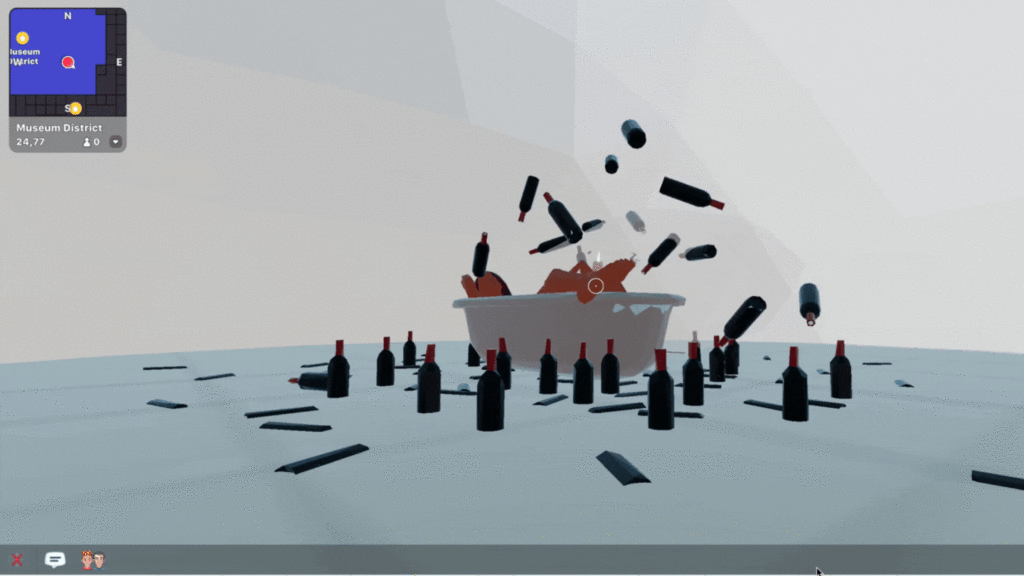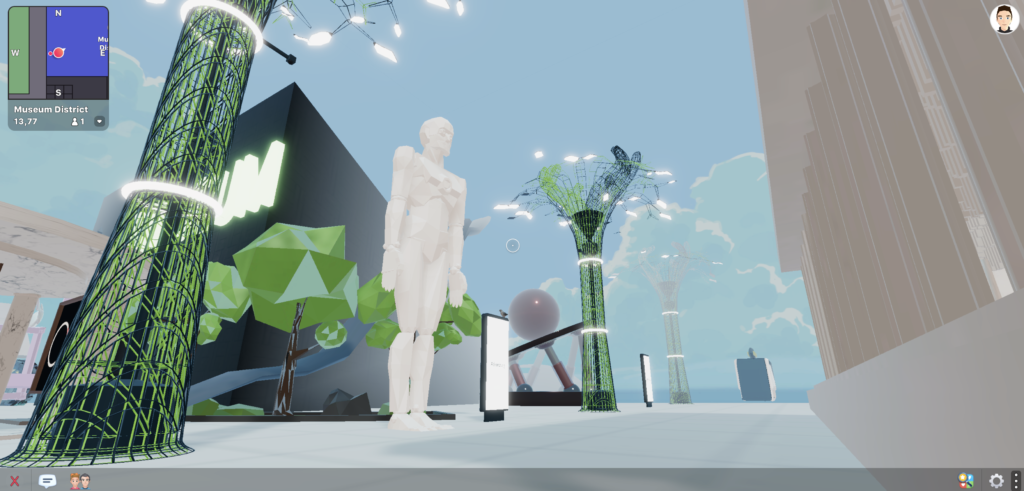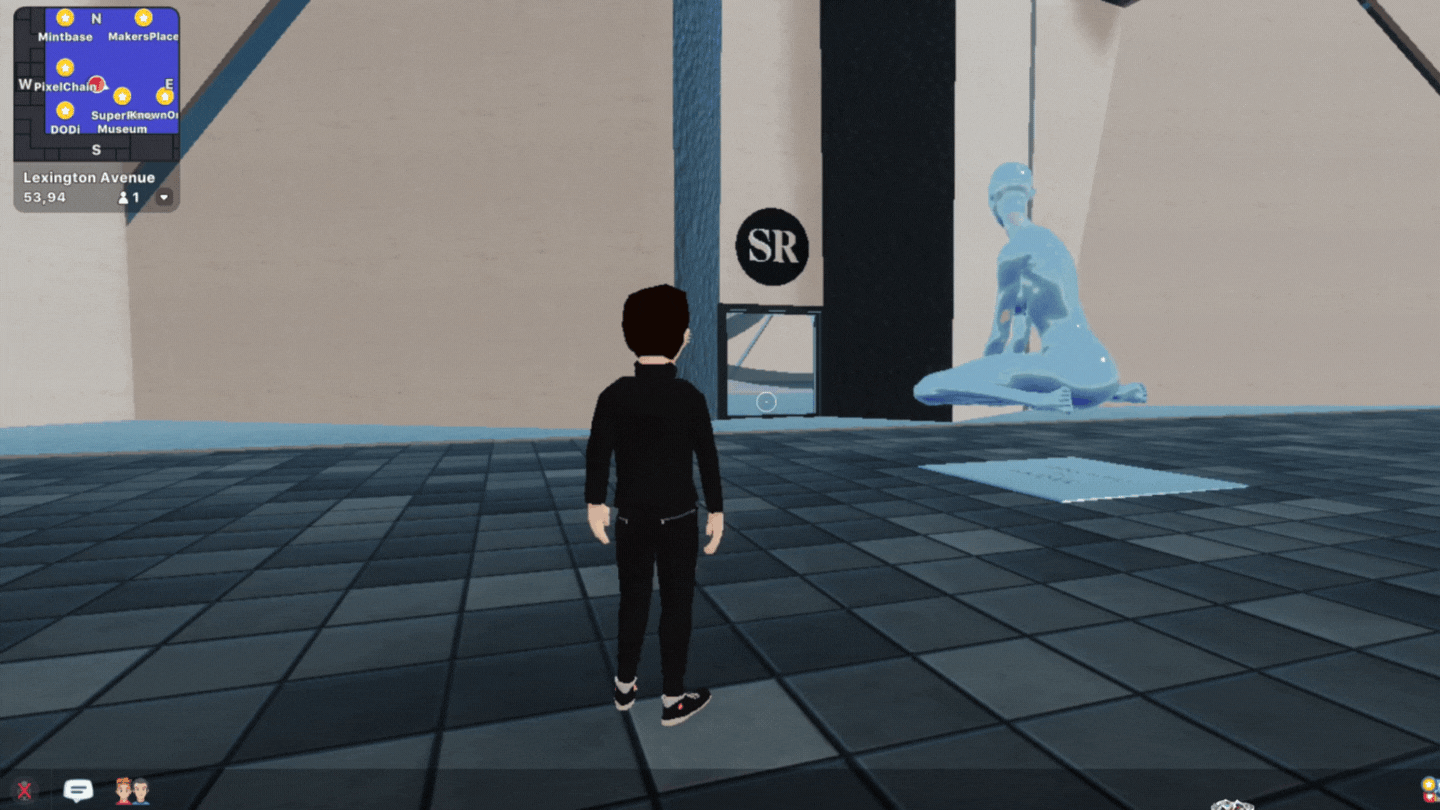Along with the rise in the popularity of NFTs, it should come as no surprise that artists are seeking out new and exciting ways to exhibit their digital art. While the concept of a “metaverse” first found its footing in the world of video games, catering to the millions of MMORPG gamers worldwide. But in the past three or so years, a number of non-gaming exclusive metaverses have begun popping up.
Decentraland, one of the leading examples, was founded back in 2017 – created with the intention of developing a replacement for websites for within VR experiences. Due to the slow adoption of VR headsets and experiences, they decided to pivot their offering to an XR experience available via almost any browser. While the experience is quite “gamified,” purposes for spending time in the Decentraland metaverse primarily include viewing or displaying NFT artwork, shopping for or creating Virtual Fashion / Wearables, and interacting with Decentralized Apps (dapps) and companies in real-time within an immersive 3D world.
Well-known companies in the DeFi space have already invested significant amounts of money into developing virtual spaces within this metaverse. If you tour around their welcome plaza or Museum District, you’ll recognize many familiar names ranging from Binance, SuperRare, and Makersplace. Each of these organizations has fully fleshed out immersive experiences within the space, complete with links to exterior websites and robot characters with whom you can “speak” in order to explain various offerings. Despite Decentraland being quite private about the number of users currently on the platform, according to the LinkedIn Profile of their ‘Head of Marketing and Growth’ Fede Molina, he has grown “the community from a few hundred to 1M+ members” within his three years at the organization. It should also be noted, then when I consulted this figure only a month-and-a-half ago in March, it was listed as 500k+. I’m not going to try to jump to any conclusions, but it’s fairly clear that this platform is growing exponentially.

So why is that? Decentraland is far from the only Metaverse option on the market, with competitors such as Crypto Voxels, Mozilla Hubs, Arium, and many others releasing new features daily. However, one element, specifically for artists, that functions exceptionally well on Decentraland in particular, is the implementation of interactive or moving 3D sculptures. While this feature is available in a number of other metaverses or virtual art exhibition spaces, in my humble opinion, Decentraland’s objectively look the best.
Viewers can move around massive 3D sculptures in real-time. These sculptures can be as large as a house or small enough to fit on a table and have the options to levitate, rotate, move through the air, and be interactive. The scale of these virtual sculptures alone is worth ruminating upon. In reality, artisans working in the world of large-scale sculptures often pay tens if not hundreds of thousands of dollars to obtain the materials for their pieces alone. Then when one factors in the costs associated with moving, shipping, and/or installing a large stone or marble pieces – it begins to make the artform prohibitively expensive to newcomers. What emerging artist has a quarter of a million dollars to spend on erecting and shipping out a 10-ton marble sculpture? And if you begin to consider the technical and mechanical requirements necessary to have a piece of this kind of scale levitate or rotate – it begins to become impossibly expensive and nearly logistically impossible.
This is where exhibiting within a metaverse comes in. Within Decentraland, and many other similar metaverse spaces, users can create sculptures at a massive scale without having to consider their structural feasibility or physical cost. Even artists already creating sculptures out of Bronze, Marble, or through other means should be excited about the prospect of modelling their work virtually, exhibiting said work virtually, and the IF the piece is sold, they can create (sculpt) or 3D print their piece made specifically to order. This metaverse-centric system is not only far more cost-effective for artists, but also far more sustainable! Shipping massive sculptures around the world requires a massive amount of resources. Trucks, ships, planes, massive crews of movers, packaging, and so much more goes into the process.

Shifting the display process of large-scale sculptures into the digital realm makes all of these wasteful processes redundant. Simply allowing onlookers, and interested buyers, to interact with large-scale pieces exclusively within the digital realm. While users can’t yet physically touch pieces within this context, one can come quite close. In most XR experiences, such as Decentraland, users can experience sculptures from extremely up close to far away in context. Furthermore, users have the option to interact with certain objects, jumping on top to follow along with the motion of an object, or completing an animation or task. Also, if users experience metaverses through a VR headset, the experience can be even more fully immersive.
While viewing moving large-scale sculptures may not yet be seamless across all metaverses, one must remember how early we are in the grand scheme of this industry. Most companies are only in their first year of business and about 99% of the world’s population is still not yet invested in crypto. However, what does seem certain is that the concept of exhibiting digital artworks within a metaverse is still in its absolute infancy. And the fact that this space has already come so far and allows artists across mediums to achieve so much is beyond encouraging. I very much hope to see more growth within this space in the coming months and look forward to more traditional artists, especially sculptors, taking advantage of this fantastic new technological framework.




